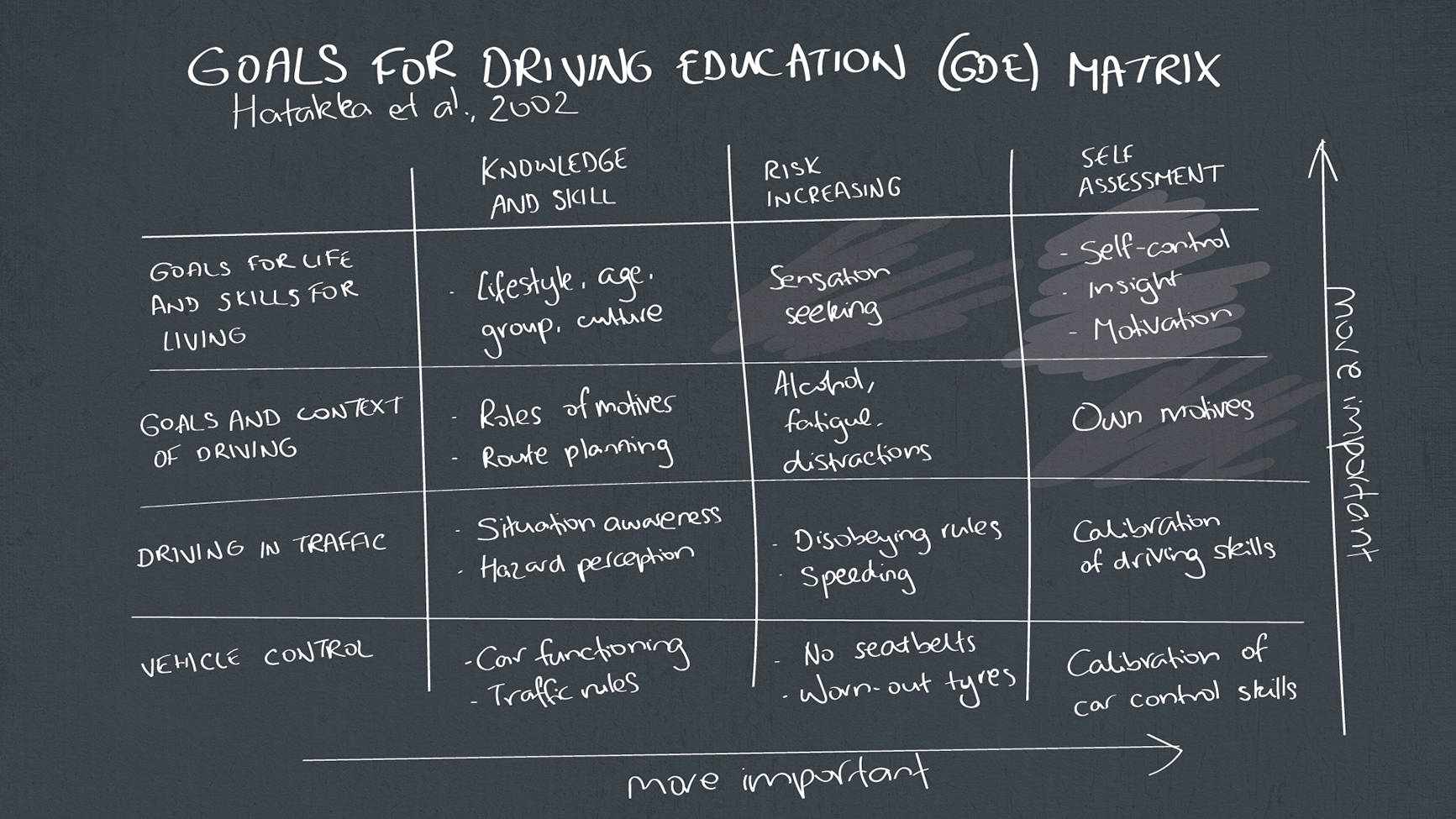Fleetcoach focuses on higher-level skills rather than car handling skills. Car handling skills are easier to learn, and can give the driver a sense of overconfidence. The Goals of Driver Education (GDE) matrix, (which came out of the prestigious EU-funded project GADGET) sets out a hierarchy of skills which are important for drivers to possess in order to be safe, and manual skills are much lower in the hierarchy than the higher-level driving skills. Coaching of these cognitive skills forms the core of the Fleetcoach programme.
There are four hierarchical levels of driving skills in the matrix. Here they are, from most important to least:
1 – Goals for life and skills for living
This is the level that is of the highest importance in the matrix. It involves knowledge and skills in a more general way, including personal tendencies and how they affect driving behaviour. Fleetcoach covers these important skills through training self-evaluation, and values relating to risky behaviours. Learning how to accurately assess your own skills is an essential part of being a good and safe driver, so that they do not become overconfident and more of a danger on the road. Being able to evaluate risky situations around them is a vital skill and Fleetcoach’s curriculum is largely dedicated to this very point.
2 – Goals and context of driving
This level is about specific knowledge and skills used while driving. It includes things like planning ahead for a trip, driving environment and the driver’s own condition. Fleetcoach covers skills required to plan a journey, and self-awareness skills like checking in with yourself to make sure you aren’t too tired to drive. The driving environment (variety of road conditions, urban/rural, different risky scenarios etc. make up the core part of the programme.
3 – Mastery of traffic situations
This one is about taking into account the wider traffic situation we might find ourselves in when on the road. Things like traffic rules, communicating with other drivers and knowing what to anticipate are all very important when on the road. Fleetcoach spends a lot of time training this kind of hazard perception and risk management so that we’ll be safe in any situation we encounter.
4 – Vehicle manoeuvring
This part of the matrix is specifically about the driver, in the car, on the road. It’s about the tyres, the vehicle, tricky situations, speed choice and skills required to physically keep your car safely on the road. Fleetcoach spends some time here, but not as much as the other, more important areas. The literature says that if too much time is spend focusing on this set of skills, people can increase their confidence much too quickly and unrealistically. We follow this best practice and focus on the other more sophisticated levels more intensely.
That’s a quick summary of the four levels of the GDE matrix, which forms part of the best practice we follow with the Fleetcoach programme. If you’d like to read more, the reference to a great paper (Hatakka, 2002) discussing all four levels in more detail can be found below.




.png)




